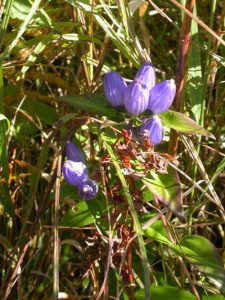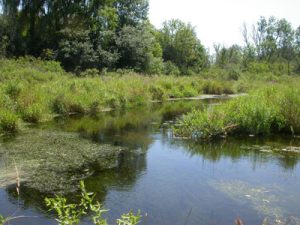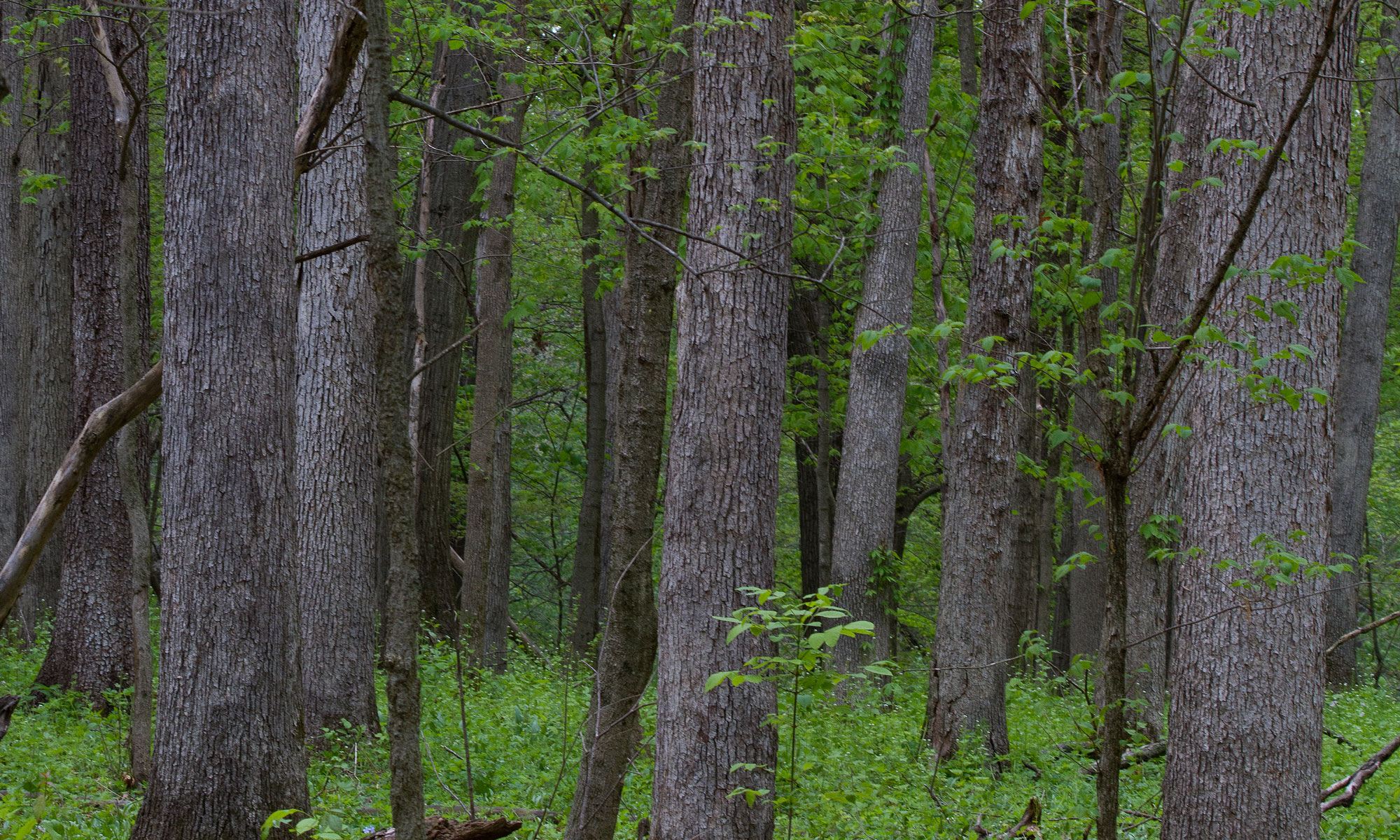 A botanical survey of the Eastern Richmond Bypass study area encompassed approximately 2,200 acres. This survey identified all land cover-types present, calculated total acreage represented by each, determined high-quality natural vegetation communities occurring in the area, and searched for threatened or endangered vascular plant species. Some of the most interesting areas found during this survey were several highly diverse wetlands along the southern limits of the project area. These wetlands included seeps, swamps, sedge meadows, and calcareous fens. The highest-quality area found during botanical surveys occurred along the south side of Nippersink Creek, an integrating mosaic of sedge meadow and calcareous fen with 90 vascular plant species (93.3% native). Many species found here were noteworthy indicator species — species found only in remnants of their native habitats. This list included fringed brome (Bromus ciliatus), sweet Indian plantain (Cacalia suaveolens), marsh bellflower (Campanula uliginosa), yellow lake sedge (Carex utriculata), fen thistle (Cirsium muticum), fen betony (Pedicularis lanceolata), and swamp saxifrage (Saxifraga pensylvanica). The Eastern Richmond Bypass study area contained portions of the North Branch of Nippersink Creek and its tributaries, an Illinois Natural Areas Inventory site.
A botanical survey of the Eastern Richmond Bypass study area encompassed approximately 2,200 acres. This survey identified all land cover-types present, calculated total acreage represented by each, determined high-quality natural vegetation communities occurring in the area, and searched for threatened or endangered vascular plant species. Some of the most interesting areas found during this survey were several highly diverse wetlands along the southern limits of the project area. These wetlands included seeps, swamps, sedge meadows, and calcareous fens. The highest-quality area found during botanical surveys occurred along the south side of Nippersink Creek, an integrating mosaic of sedge meadow and calcareous fen with 90 vascular plant species (93.3% native). Many species found here were noteworthy indicator species — species found only in remnants of their native habitats. This list included fringed brome (Bromus ciliatus), sweet Indian plantain (Cacalia suaveolens), marsh bellflower (Campanula uliginosa), yellow lake sedge (Carex utriculata), fen thistle (Cirsium muticum), fen betony (Pedicularis lanceolata), and swamp saxifrage (Saxifraga pensylvanica). The Eastern Richmond Bypass study area contained portions of the North Branch of Nippersink Creek and its tributaries, an Illinois Natural Areas Inventory site.
 Many important aquatic plants and animals were found as well. Not only were there large fish, turtles, and an assemblage of freshwater mussels in this creek, but along its banks and in its ponded areas were habitats of highly diverse terrestrial and aquatic vegetation. This portion of the project area had the highest diversity of plants, totaling 124 species (approximately 80% native). Interesting aquatic species at this site included forked duckweed (Lemna trisulca), white water lily (Nymphaea tuberosa), yellow water lily (Nuphar luteum ssp. macrophyllum), white water buttercup (Ranunculus longirostris), and the carnivorous plant, bladderwort (Utricularia vulgaris), which obtains nutrients by capturing small aquatic organisms including insect larvae, crustaceans, and algae.
Many important aquatic plants and animals were found as well. Not only were there large fish, turtles, and an assemblage of freshwater mussels in this creek, but along its banks and in its ponded areas were habitats of highly diverse terrestrial and aquatic vegetation. This portion of the project area had the highest diversity of plants, totaling 124 species (approximately 80% native). Interesting aquatic species at this site included forked duckweed (Lemna trisulca), white water lily (Nymphaea tuberosa), yellow water lily (Nuphar luteum ssp. macrophyllum), white water buttercup (Ranunculus longirostris), and the carnivorous plant, bladderwort (Utricularia vulgaris), which obtains nutrients by capturing small aquatic organisms including insect larvae, crustaceans, and algae.
